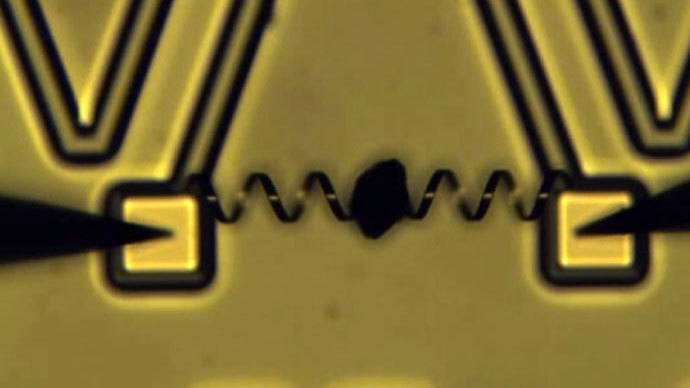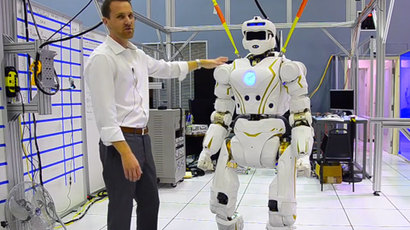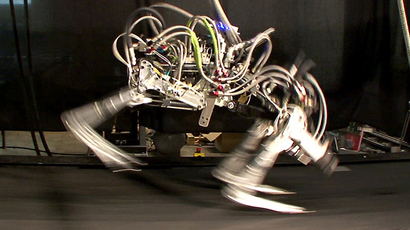Scientists create Terminator-style muscle at 1,000 times human strength

American scientists have developed a robotic muscle 1,000 times more powerful than a human’s – using a revolutionary material that fluidly changes its properties.
The invention gives vanadium dioxide amazing, superhero-style powers. Its most striking property is to change shape and structure whenever differing amounts of heat are applied to it.
This made it perfectly suited for creating a torsional motor muscle, as researchers at the US Department of Energy’s (DOE) Lawrence Berkeley National Laboratory have found, the Lab’s website reported.
Added to this is the material’s capacity for changing size and other physical characteristics. And when made into a robotic muscle, its estimated strength equals to hurling objects 50 times its weight and five times its length at speeds as fast as 60 milliseconds.
Team leader on the study, Junqiao Wu, said in Berkeley Lab’s statement that they have “created a micro-bimorph dual coil that functions as a powerful torsional muscle, driven thermally or electro-thermally by the phase transition of vanadium dioxide.”
Wu, who is a member of both Berkeley Lab and the Berkeley University’s Materials Science and Engineering department, co-authored the research submitted to the journal Advanced Materials, entitled “Powerful, Multifunctional Torsional Micro Muscles Activated by Phase Transition.”

Vanadium dioxide is not a new material to the electronics industry, already receiving praise for its ability to be both an insulator (at low temperatures) and a conductor (whenever the temperature is raised to above 67 degrees) undergoing what scientists call a temperature-driven phase transition. They say that more energy-efficient optical and electronic devices are definitely in the cards.
And that is not all. For when heated, vanadium dioxide’s crystals begin to rapidly contract along one dimension, while expanding along the other two, showing that a structural phase transition effected by temperature changes is also taking place. This physical property means that in future, using the material for anything from artificial muscles to robotic technologies and complex machinery is practically a given.
As Wu explains, “miniaturizing rotary motors is important for integrated micro-systems and has been intensively pursued over the past decades… the power density of our micro-muscle in combination with its multi-functionality distinguishes it from all current macro- or micro-torsional actuators/motors.”
This opens doors for scientific progress being made almost exponentially, as a series of micro-muscles could be used to build a more complex organism – perhaps even simulate an active neuromuscular system, due to the material’s miraculous property of “proximity sensing and torsional motion [which] allow the device to remotely detect a target and respond by reconfiguring itself to a different shape,” Wu says. “This simulates living bodies where neurons sense and deliver stimuli to the muscles and the muscles provide motion.”
However researchers say it is a little too early to start fearing a Terminator-style rise of the machines, as the mechanism in question is currently the size of a microchip.














